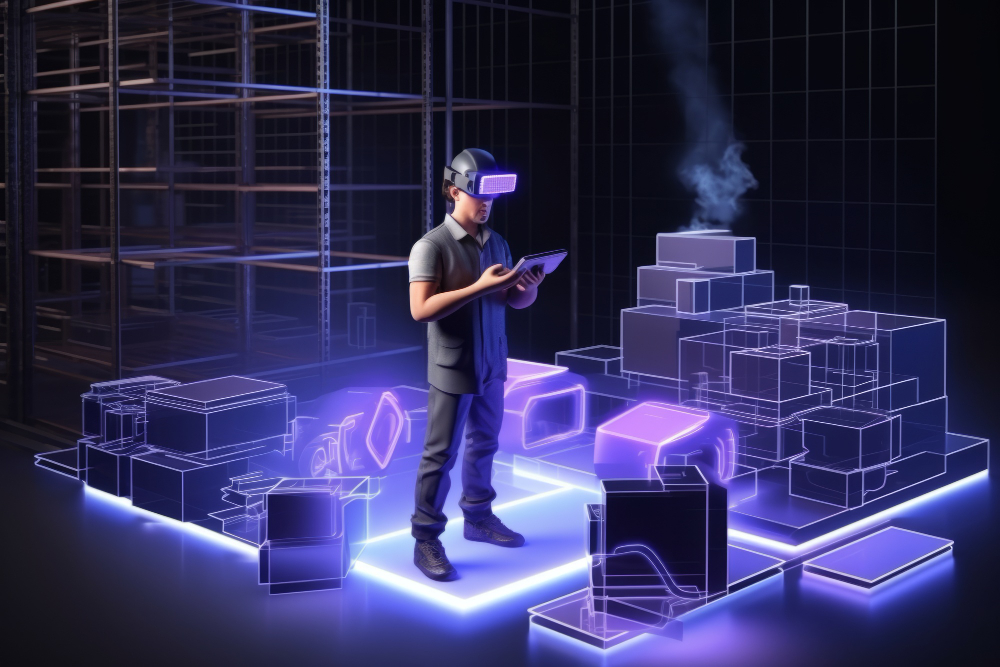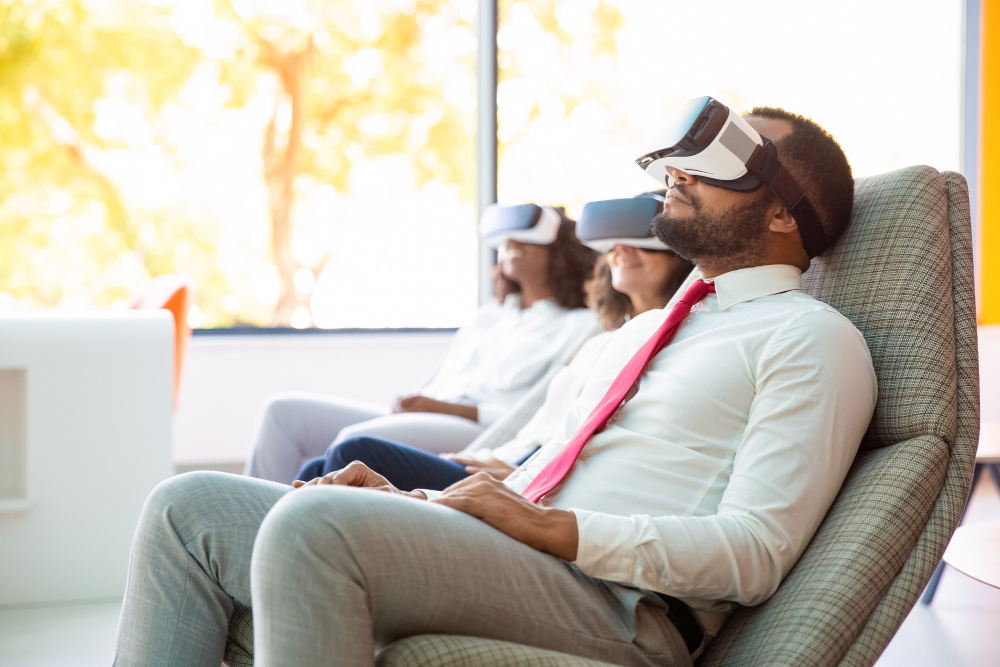 Link Insertions on Real Blogs – Quick Wins for Better Rankings!
Link Insertions on Real Blogs – Quick Wins for Better Rankings!
Virtual Reality Services in Mental Health: A New Approach to Therapy
Written by Michael Jesse » Updated on: June 17th, 2025

Mental health treatment has long relied on traditional methods like talk therapy, medications, and counseling. However, with the rise of advanced technologies, new approaches are emerging to enhance patient care and improve outcomes. One of the most promising developments is the use of innovative virtual reality services in mental health therapy. By offering immersive and interactive experiences, virtual reality (VR) is revolutionizing how therapists engage with patients, helping individuals address a wide range of mental health conditions in more personalized and impactful ways.
The appeal of VR therapy lies in its ability to create controlled environments that allow patients to face their fears, anxieties, and traumas in a safe and guided space. These virtual environments are customizable, making it possible for mental health professionals to tailor each session to the patient’s specific needs. As a result, virtual reality services are being increasingly integrated into therapy programs to support everything from anxiety and phobia treatments to PTSD and even depression management.
1. Virtual Reality and Exposure Therapy
One of the most effective applications of virtual reality services in mental health is in exposure therapy. This method helps individuals confront their fears or traumas gradually in a safe and controlled setting.
Safe Simulations: VR allows therapists to recreate scenarios that trigger anxiety or fear in patients, such as heights, public speaking, or crowded places, without leaving the therapy room.
Controlled Environment: The therapist can adjust the intensity of the scenario based on the patient's readiness, providing a personalized experience.
Gradual Desensitization: By slowly increasing the level of exposure, patients can become desensitized to their fears and learn coping mechanisms.
Wide Range of Applications: VR exposure therapy has been effective in treating phobias, PTSD, social anxiety, and OCD, offering a dynamic tool that traditional methods may not match.
2. Treating Anxiety and Depression with Virtual Reality
Anxiety and depression are two of the most prevalent mental health issues globally. Virtual reality services are proving to be a valuable tool in managing these conditions through relaxation techniques and cognitive behavioral therapy (CBT).
Mindfulness and Relaxation: VR environments can transport patients to calming settings such as beaches, forests, or serene landscapes, helping them practice mindfulness and relaxation techniques.
Interactive CBT : VR provides an interactive way for patients to engage in cognitive behavioral therapy, helping them challenge negative thoughts and behaviors.
Biofeedback Integration: With real-time monitoring of heart rates and stress levels, VR can adjust its simulations to ensure patients remain in a calm state, further aiding in relaxation.
Immersive Distraction: VR can serve as a distraction tool, shifting focus away from negative thought patterns and providing immediate relief from depressive symptoms.
3. Post-Traumatic Stress Disorder (PTSD) Treatment
For individuals struggling with PTSD, reliving traumatic experiences in a controlled and safe environment can lead to significant healing. Virtual reality services are especially beneficial in providing this type of exposure therapy to military veterans and trauma survivors.
Controlled Trauma Re-exposure: With VR, patients can revisit trauma-inducing environments, enabling them to process and overcome the trauma in a safe, therapeutic setting.
Therapist-Guided Therapy: Therapists can customize VR scenarios to fit the patient’s experience, providing a gradual re-exposure process.
Real-Time Monitoring: Virtual reality sessions are often paired with physiological monitoring to ensure the patient is emotionally stable throughout the experience.
Empathy Building: VR can also help therapists gain a better understanding of their patients’ experiences, making it a powerful tool for empathy and connection.
4. Virtual Reality in Cognitive Behavioral Therapy (CBT)
CBT is one of the most widely used forms of therapy in mental health treatment. VR adds a new dimension to CBT by offering real-time simulations that challenge patients to apply the principles of CBT in virtual scenarios.
Real-World Simulations: Patients can practice challenging situations like job interviews, social interactions, or other anxiety-inducing tasks in a virtual space.
Behavioral Testing: VR allows patients to test their cognitive and emotional responses in different scenarios, helping them recognize and alter destructive patterns.
Personalization: Each VR scenario can be customized to fit the patient’s specific challenges, offering a more targeted approach than traditional CBT methods.
5. Advantages of Virtual Reality in Mental Health
The integration of virtual reality services into mental health therapy brings many advantages, making it a valuable tool for both therapists and patients.
Immersive Experiences: Unlike traditional talk therapy, VR immerses patients in environments that closely mimic real-life situations.
Reduced Risk: Patients can confront their fears and anxieties without the risks that may accompany real-world exposure.
Faster Progress: Many patients see faster progress with VR therapy compared to traditional methods due to its immersive and engaging nature.
Wider Accessibility: VR technology can be accessed remotely, making it possible for patients to participate in therapy from their homes, which is especially beneficial for individuals with mobility challenges or in rural areas.
6. Challenges and Considerations in VR Therapy
Despite its advantages, there are still challenges to address as virtual reality services continue to evolve in the mental health field.
Cost and Accessibility: VR systems can be expensive, limiting access for some mental health providers and patients.
Technical Expertise: Therapists may require additional training to operate VR equipment and integrate it into their treatment plans.
Ethical Concerns: As VR becomes more integrated into therapy, ethical considerations around patient data, consent, and long-term effects need to be addressed.
Conclusion
Virtual reality services represent a groundbreaking shift in the way mental health therapy is delivered. By offering immersive, controlled, and customizable experiences, VR allows patients to confront their mental health challenges in new and impactful ways. From exposure therapy for phobias and PTSD to relaxation and mindfulness practices for anxiety and depression, VR is opening up new avenues for effective treatment. As technology continues to advance, we can expect virtual reality services to play an even greater role in mental health, providing accessible, personalized, and innovative care for patients worldwide.
Note: IndiBlogHub features both user-submitted and editorial content. We do not verify third-party contributions. Read our Disclaimer and Privacy Policyfor details.
Copyright © 2019-2025 IndiBlogHub.com. All rights reserved. Hosted on DigitalOcean for fast, reliable performance.
















